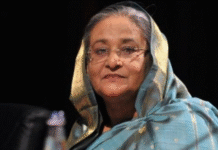Schooling the deprived children: “One size” cannot fit all

In Sariakandi upazila of Bogura district, there are 168 primary schools, 44 of which are in char or sandy shoals created by the shifting and temperamental Jamuna River. The Daily Star reporter Mostafa Shabuj visited 16 of the char schools recently.
A heart-rending description of the poor state of schooling for the char children shows that the government primary school system is not working for them (“Char children getting poor schooling,” Mostafa Shabuj, The Daily Star, 13 May 2019). What can be done? Are there alternatives?
There are 170 teachers, out of 223 posts, in the 44 char schools for 6,739 students on the school rolls. It was found that 24 out of the 51 teachers working in the 16 char schools visited by the reporter lived in Bogura town, some 30-40 kms away. Most of them cannot reach school on time and are in a hurry to leave after 3:00 pm, though the school hours are 9 am to 4:30 pm, according to Sariakandi Upazila Education Officer Rafiqul Alam.
The teachers, majority of whom are women, said they had no option. The char has no living accommodation for them and their families. The children of many go to school at secondary and college level, in Bogura. The teachers come to school by public bus, which do not run at the right hours for the school day; some take small boats from the bus stop to the school.
The school buildings are dilapidated; there are no toilets or wash blocks in 10 of the 16 schools visited. Shafiqul Islam, headmaster of Adbaria Government Primary School, said, “We hold classes in a broken tin-roof house, sometimes under the open sky.” Zui Akter, headteacher of Chandanbaisha Government Primary School, said, “Between 1995 and 2015, we shifted our school five times due to river bank erosion.”
Student attendance in the 16 schools visited averaged 60 percent. In the 2018 Primary Education Completion Exams, Bogura sadar upazila had a pass rate of 99.46 percent, with 38 percent scoring GPA-5. The 44 char schools had a pass rate of 65 percent and the GPA-5 scorers were below 5 percent.
The snapshot of Sariakandi char schools represent the larger picture of at least 10 million char people in Bangladesh with about a million children of primary school age. Another 20 million people are estimated to be in difficult ecological conditions, such as coastal areas, low-land haor areas, tea plantations and hills with scattered habitations. Primary education of some two million of their children besides the million char children is in jeopardy.
The public education system does not offer a solution for the children deprived of their basic education. The government system by its nature cannot be flexible and creative enough to respond to the specific circumstances of the disadvantaged children.
The denial of the right to education of the deprived children is not a new phenomenon. Flexible and innovative approaches were pioneered by BRAC in the 1990s and extended to serve at one time up to three million children who were not participating in the regular primary schools, especially girls and the children from poor households.
Non-formal primary education (NFPE), as it came to be known, was adopted by other larger and smaller NGOs in the country, which boosted primary education access significantly. Its hallmarks were flexibility and adaptation to the specific conditions of the children.
Single teacher small school, a school room rented from the community and refurbished (rather than having a permanent building), multi-grade classes, high school completers from the community recruited as teachers, and attractive learning materials and teachers’ manuals were NFPE’s special features and the key to its success.
Teachers supported by strong and regular supervision and monitoring, intensive short training and continuous refresher for teachers, and close contact with parents helped to assure quality.
Independent assessment of NFPE showed that over 90 percent of the students, who had never enrolled in formal primary school or dropped out early, completed primary education and performed as well or better as the formal school students.
The successful NFPE model was supported by donor funding with the NGOs held accountable for results. With the adoption of the subsector primary education programme of the government (PEDP3 since 2011 and currently PEDP4) almost all external assistance for primary education was channelled through the government and the financing for the NGOs’ NFPE approach dried up.
Mention may be made of the Aloghar project of Caritas Bangladesh which has offered primary education to over 158,000 vulnerable children of adivasi and cultural minority communities in the remote and inaccessible areas. This project supported by European Union donation is now at the point of being terminated for lack of funding, though the needs remain (“One Thousand Education Centres for the Hardest to Reach Children,” Caritas Bangladesh, February 2019).
PEDP3 and PEDP4 did not provide for supporting NFPE through NGOs, which could serve the disadvantaged children described above. A small window called Second Chance Primary Education was added at the later stage of PEDP3. But it was stymied by restrictions, especially by government procurement procedures, which restricted the required flexibility and prevented the well-established NGOs with proven track-records from participating in it in a substantial way. Selection of the right NGOs and effective monitoring also suffered from government procedures and inefficiencies.
The “one size” solution that the government primary education system offers cannot be the answer for the deprived children. Their education right can be ensured with the schooling opportunity they deserve if a genuine partnership can be forged between the education authorities and the NGOs, who have demonstrated their capacity for and commitment to creative solutions.
Dr Manzoor Ahmed is professor emeritus at BRAC University.









